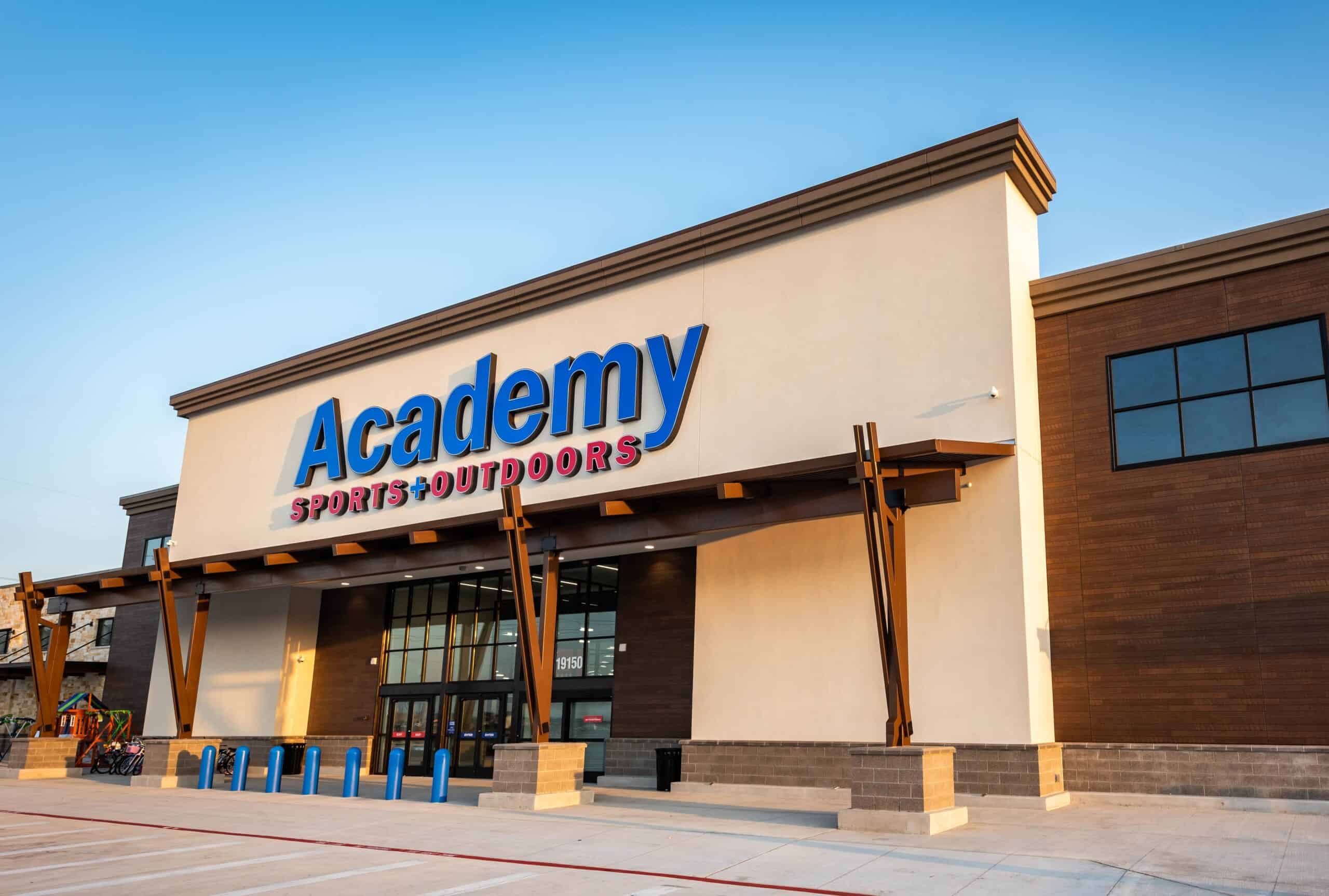
Photo: Academy Sports + Outdoors
Academy Sports Tweaks Formula for Entering New Markets
Academy Sports + Outdoors has accelerated its store opening targets, but it is also adjusting its real estate strategy, including the geographic mix of new stores, the pace of openings, and initial sales targets.
When announcing its fourth-quarter results, the Texas-based chain said it now plans to open between 160 and 180 locations in new and existing markets in the next five years, an increase from its previous projections of 120 to 140 openings set in March 2023. Academy Sports ended 2023 with 282 stores across 18 states, mostly in the Southeast and Midwest.
On its quarterly call with analysts, CEO Steve Lawrence said the retailer “learned a lot” in opening 23 stores during 2022 and 2023 after not opening any stores the prior two years due to the pandemic. He said, “As we move forward, we will continue to refine the tactics that support us in achieving our long-range goals.”
Among the shifts in its real estate strategy, Academy Sports + Outdoors is:
- Increasing focus on fill-ins: Academy is now planning for a 50/50 split between openings in existing and new markets. Previously, the aim was about a third in existing markets and the remainder in new or adjacent markets. The change comes as Academy continues to see stronger openings in existing markets. Lawrence told analysts, “Where we’ve got high brand awareness, you know, we’re seeing those stores start out very, very strong. And some of these smaller markets where we’re going in with one or two stores at a time, it’s taking a little longer to build brand awareness.”
- Emphasizing smaller- and medium-sized markets: While recent openings have largely focused on large metropolitan areas, an increased focus will be on smaller- and medium-sized markets after success in some smaller markets, including Christiansburg, Virginia, and Harlingen, Texas. Lawrence said, “More stores may be a slightly lower volume, but because they’re in smaller markets, the operating costs to run those stores are very favorable and more than offset the slightly lower volume target.”
- Expanding first-half openings: Academy now plans to open about half of its new locations in the first and second quarters starting in 2025 after finding first-half openings ramped up faster than ones opened in the second half of the year. Previously, openings skewed toward the back half.
- Planning multiple openings when entering new regions: Academy now plans to enter new markets with “greater density” after finding opening too few stores impacted the ability to raise brand awareness. Lawrence said, “While they did not all open in the same weekend, [adding] a cluster of stores that opened in a relatively close time proximity to each other helped us gain greater efficiencies across multiple fronts, with the clear win being in driving greater marketing synergy.”
Largely due to the slower start in new markets, Academy lowered its first-year sales targets for new stores to a range between $12 million and $16 million, down from $18 million previously. While they’re starting out at a lower base, new stores are still expected to reach maturity and have sales similar to the average store within 10 to 15 years.
“We’re trying to be very deliberate and thoughtful about how we pace out these new stores,” Lawrence said. “It’s kind of going slow so you can go fast in the future.”
Academy still sees the potential for over 800 stores in the U.S.
Discussion Questions
What lessons should be gleaned from Academy Sports’ adjustments to its real estate strategy, particularly around entering new markets?
What overall advice do you have for chains entering a new market?
